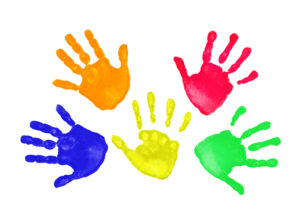Handedness, or a preference for using either the right or left hand, occurs in nearly 96% of the population, according to scientific studies. Moreover, the phenomenon extends beyond hand movements to a preference for using one side of the body over the other. Dancers have to contend with this bias, which is why turns, jumps, gestures, and locomotion sequences are practiced leading with both the right and left.
 Dance practice can ameliorate but not eliminate handedness. This is because all organic nature seems to share a bias towards handedness. The technical term is “chirality.” Chiral objects are not superimposable with their mirror image. A common example are human hands.
Dance practice can ameliorate but not eliminate handedness. This is because all organic nature seems to share a bias towards handedness. The technical term is “chirality.” Chiral objects are not superimposable with their mirror image. A common example are human hands.
If you hold your right and left hands up in front of you, they are mirror images of each other. However, no matter how the two hands are oriented, there is no way that all the features of the hands can coincide. If you place your left hand over your right, your thumbs will be facing in different directions. If you place your two palms together, your hands will be facing in different directions, and so on. Chirality is why your left glove will not fit on your right hand unless you turn it inside out.
Handedness plays a role in the practice of Laban’s Choreutic forms, as we have been discovering in the Movement Harmony Project Part 1. Find out more in the next blog.
